

| ▲ Workshop |
I needed to face off the ends of some pieces of PVC drainpipe to make accurate "pillars" for a project, so I made this quick travelling steady for my lathe. The photos should be pretty self-explanatory.
I had a couple of heavy aluminium rings sitting in the junk box so I finally managed to put one to use as the main frame. It's attached via a piece of 1" aluminium box section to the left-hand side of the lathe carriage. The three arms are bits of aluminium angle bolted to the main frame. Slots are provided in the arms for radial adjustment. Ball bearings are mounted to the ends of the arms to bear on the workpiece.
In use, the bit of pipe is first clamped in the lathe chuck and made to run true by gradually pressing something blunt (screwdriver handle) against the far end of the pipe while it's slowly rotating. The arms of the steady are then brought in until they contact the pipe and are tightened securely in place. Swarf has a habit of getting trapped underneath the rollers, causing a horrible knocking noise, but they don't seem to mind. The pipe has quite a bit of give and can accomodate non-circularity (drainpipe is rarely perfectly round).
Ball bearings should not be used when turning a metal workpiece since they can quickly fail due to the cutting forces sometimes involved. In addition, any metal swarf trapped underneath the bearings will cause severe knocking as they rotate. Far better are brass arms which slide on the surface of the workpiece, as seen in most lathe steadies. Needless to say, the workpiece must be perfectly round if rigid arms are used, since (unlike a piece of plastic pipe) the workpiece is unable to "give" under pressure from the arms.
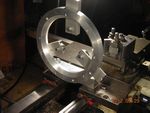 |
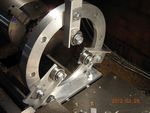 |
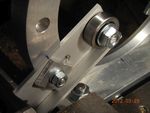 |
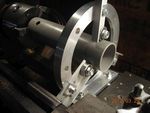 |
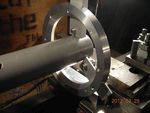 |
| ▲ Workshop |